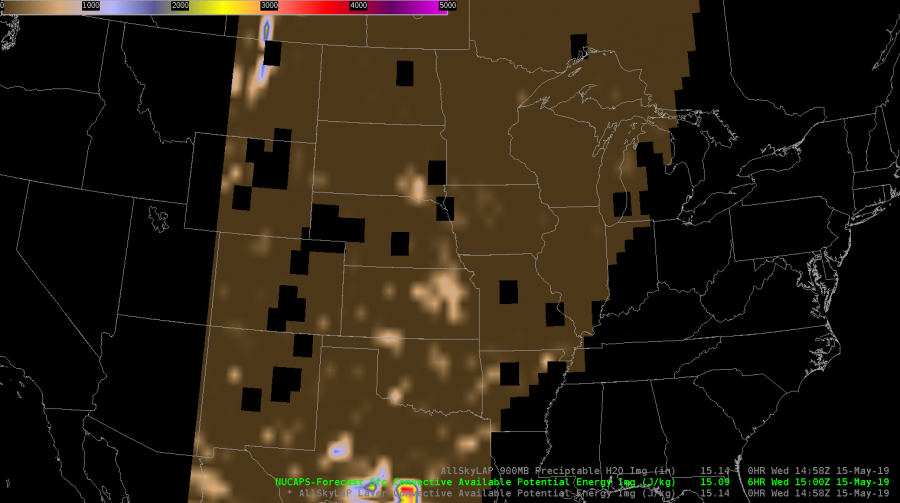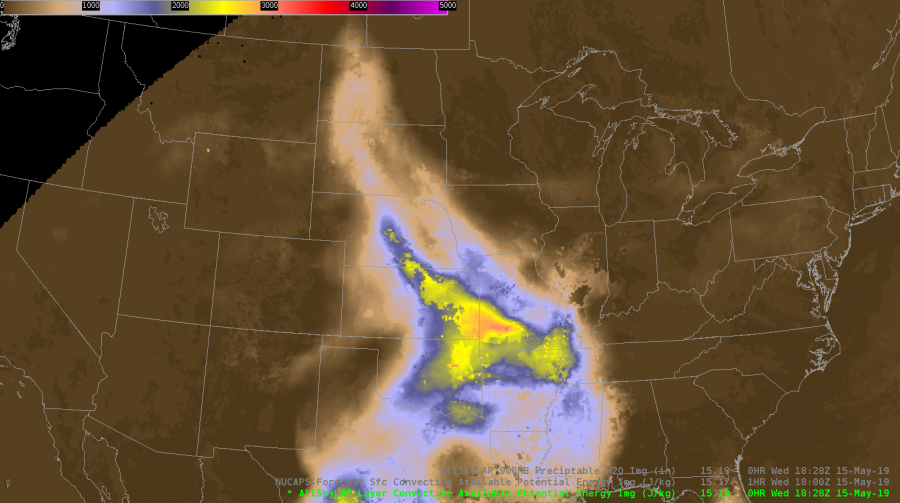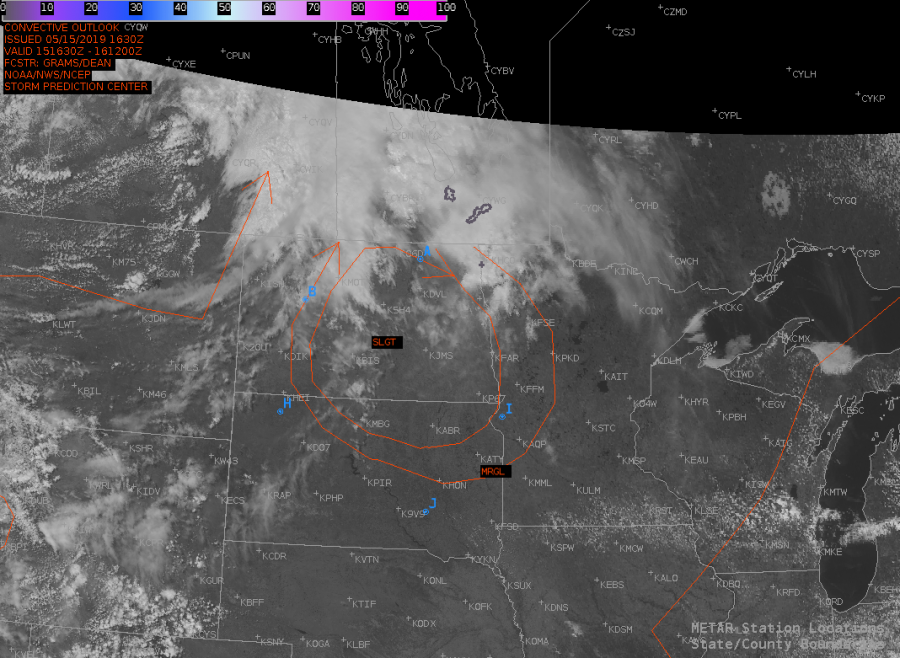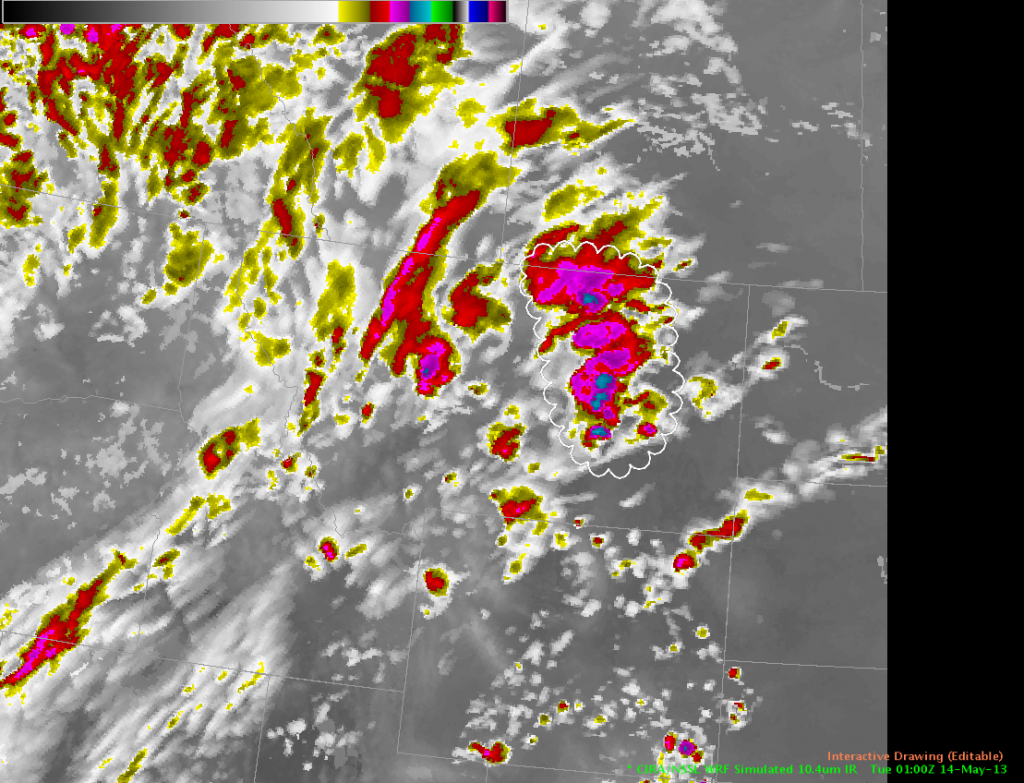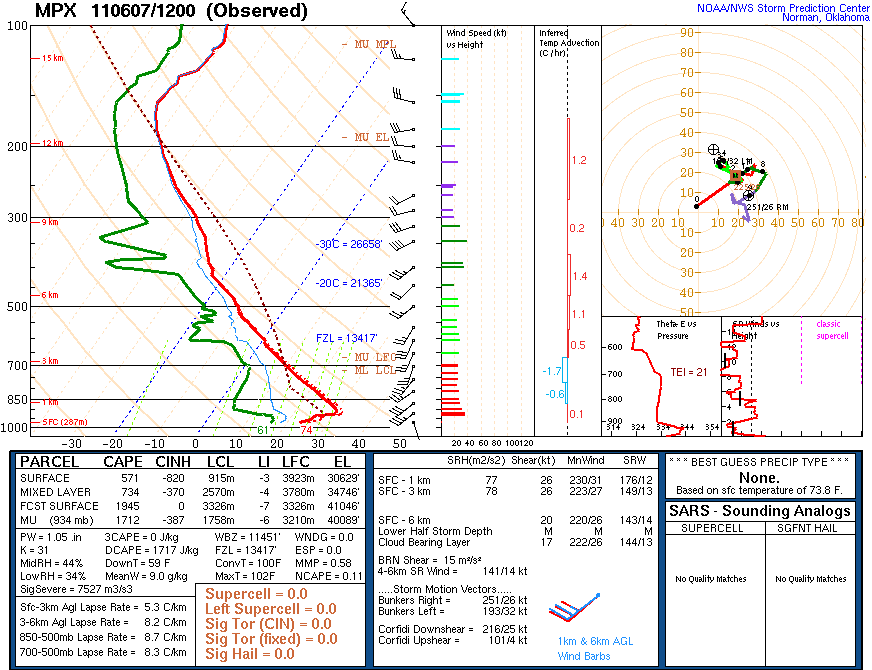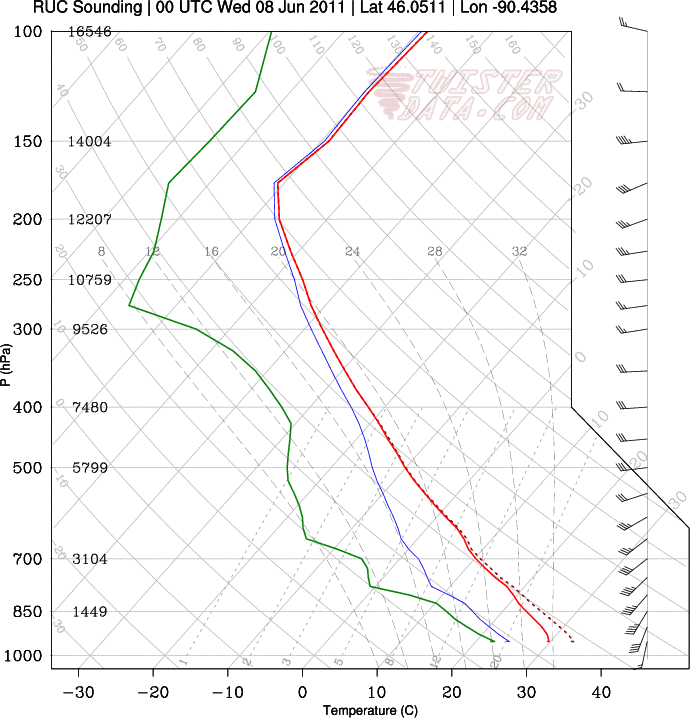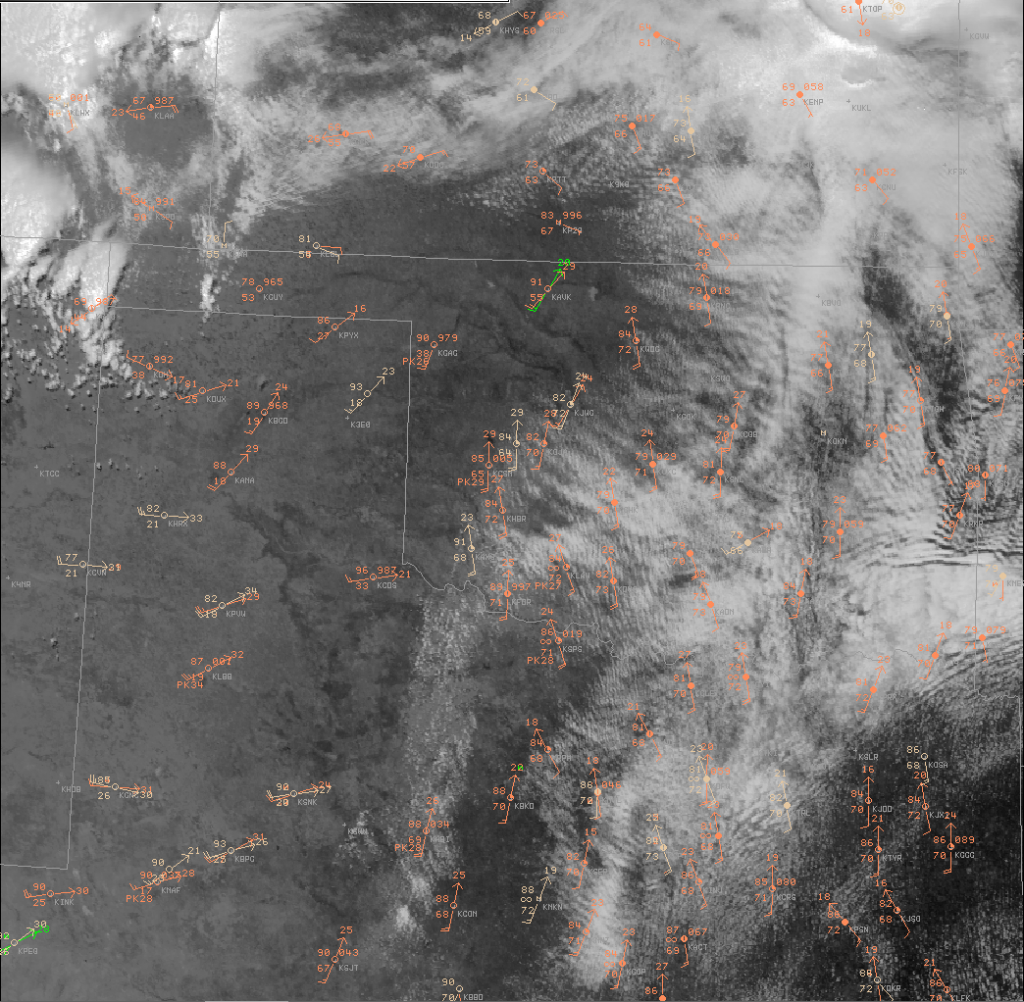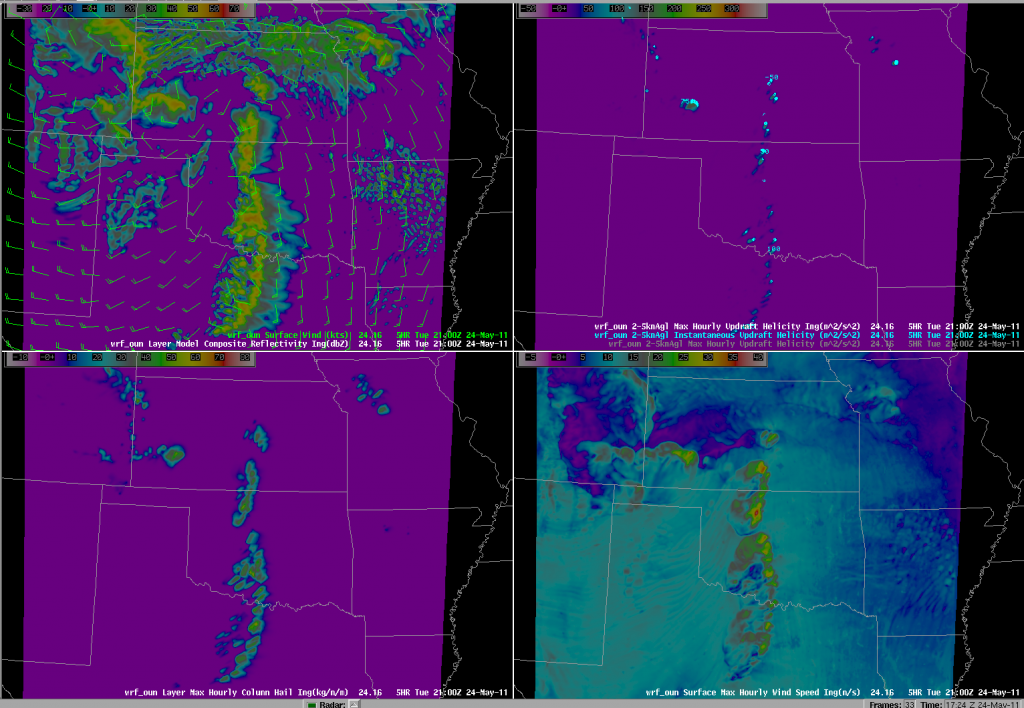Cold front…analyzed at 17z from northern NY…to northwest Ohio will continue to move southeast through the afternoon hours. Convection is currently developing fairly across northwest VT to near Binghamton. Expect continued new convective development along the boundary towards the southwest…as forcing along the boundary quickly overwhelms limited CINH.

Observations of UAH CI products and CIMMS cloud top cooling products has confirmed the rapid nature of convective development.
Objectively analyzed instability fields indicates moderate to extreme surface based energy exists ahead of the cold front…with an axis of 4000+ j/kg from just west of PHL to west of ALB. Forecast soundings ahead of the boundary suggest damaging wind gusts are the primary…and most widespread…severe weather threat.
Convection ahead of cold front is expected to exit New England by 2300z which may require shifting the area of interest farther to the west later in the operations period.

Frontal boundary becomes stationary…and more poorly defined westward across the western Ohio valley….to the central plains…as several areas of convectively induced outflow adds complexity to subjective analysis. Much of the area near the front/outflow boundaries through the Ohio valley will likely continue to be active with strong/severe storms through the afternoon and evening. A series of weak waves moving through the region may result in some modulation in the activity. Interest also points to portions of eastern KS… IA and northern half of MO… depending on exact location of boundaries and the front by late afternoon. Adequate deep layer shear would support a few supercells.
Farther southwest in OK…
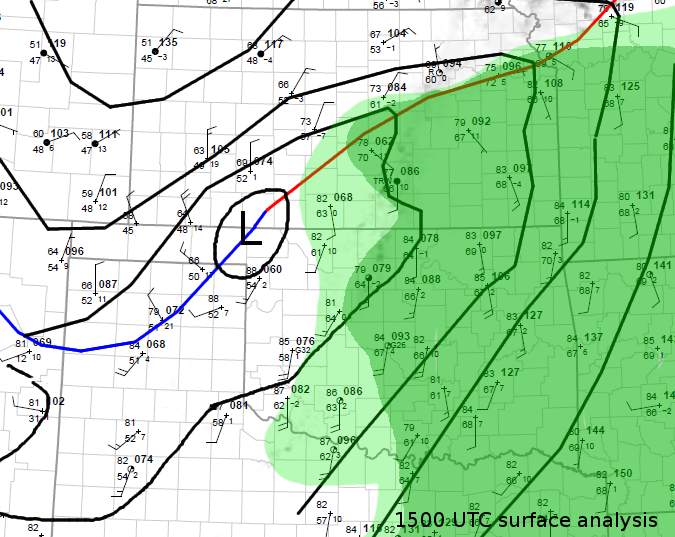
The 15 UTC surface analysis shows a 1005 low south of Dodge City, KS,
and a frontal zone extending from near Kansas City to the low center
toward the SW into the Texas panhandle. A 30-35 kt Sly low level jet
is located over W Texas into W Kansas per RUC analysis. A zone of
elevated convection stretches from NE Kansas into N-central and SW
Oklahoma. East of the front, surface dew points are in the mid 60’s
over much of central and E OK, and the upper 50’s and low 60’s in W
Oklahoma. Within the warm air mass steep lapse rates are present in
the 800-500 hPa layer. A thermal axis at 850 hPa more or less
collocated with the zone of elevated convection is associated with a
rather robust cap that will probably require lift in addition to
diurnal heating in order to be broken.
Model guidance suggests that CAPE should rise a little bit to ~2000
J/kg across most of C & E OK, E KS during the day, but there is
consensus among RUC/NAM and GFS that the boundary layer will tend to
dry out during the day, as a result of vertical mixing and northward
advection of drier air, analysed over north-central Texas. A shortwave
trough over E Colorado will move E/NE ward, but most forcing
associated with this feature should pass into Kansas.
GFS, RUC and NAM produce little to no precip over OK until 00 UTC
strong CAP. HRRR has a little bit of precipitation developing around
21 to 22 UTC in several runs. Yet, a few storms will probably form
over W Oklahoma in vicinity of the front, probably in the late
afternoon or early evening (22-02 UTC). Somewhat higher coverage is
expected across Kansas. Given that 0-6 wind shear increases to about
40 kt, well-organized multicells and perhaps one or two rotating
storms will be possible. The few storms that develop will probably
produce some large hail, and, given the deep dry boundary layer, some
severe wind gusts.
Buonanno/Sohl/Groenemeijer
